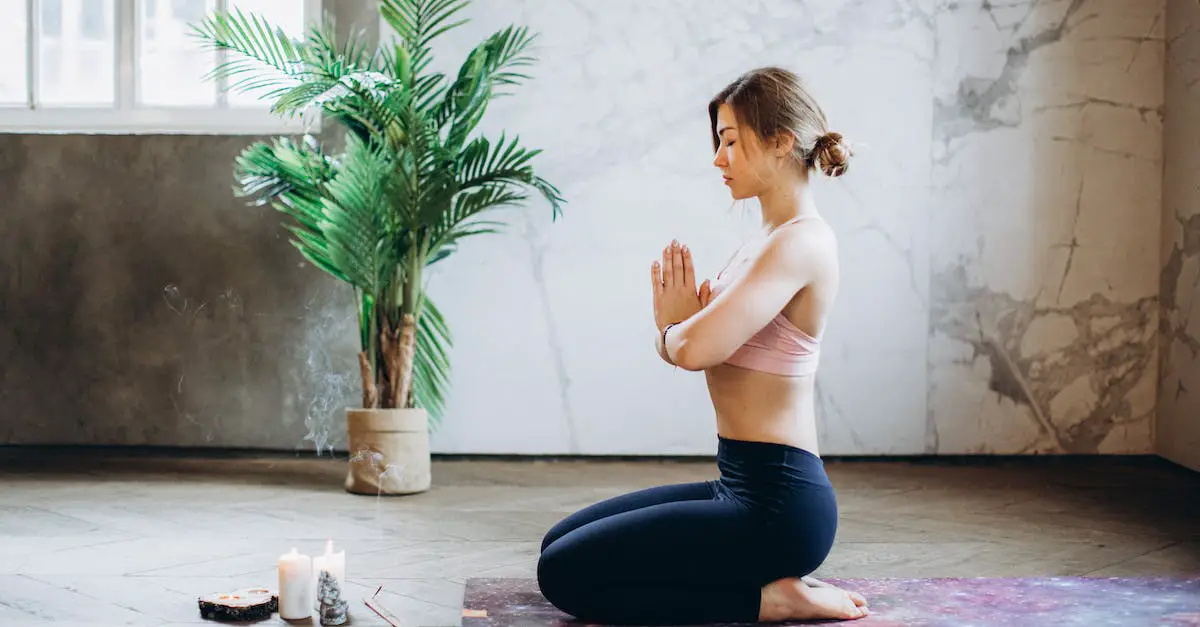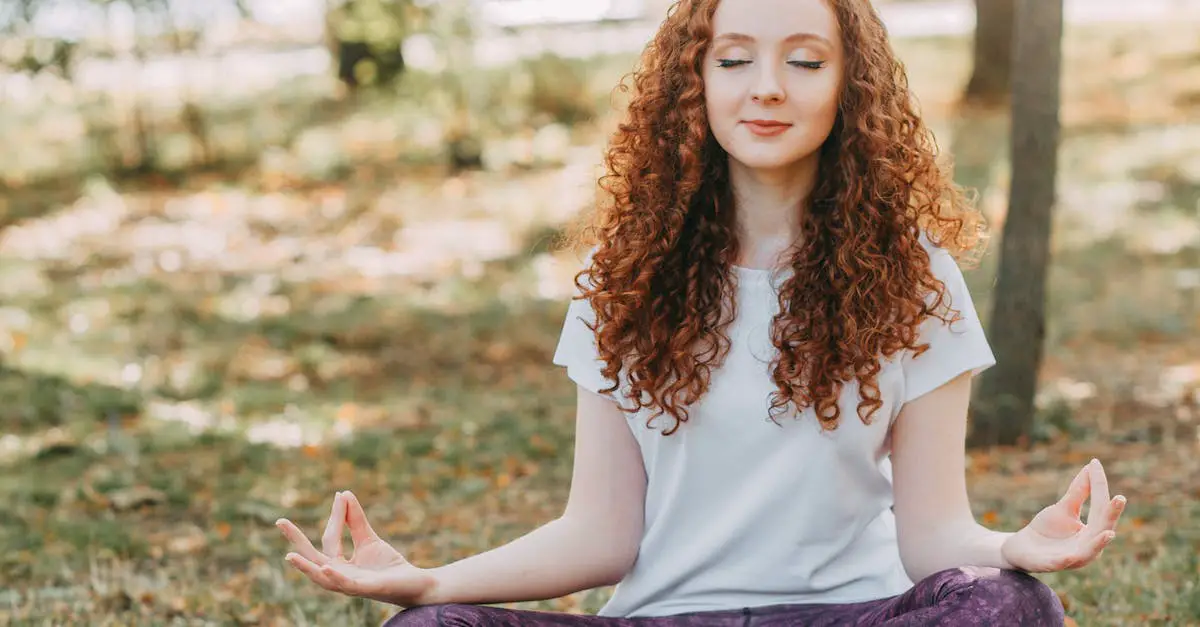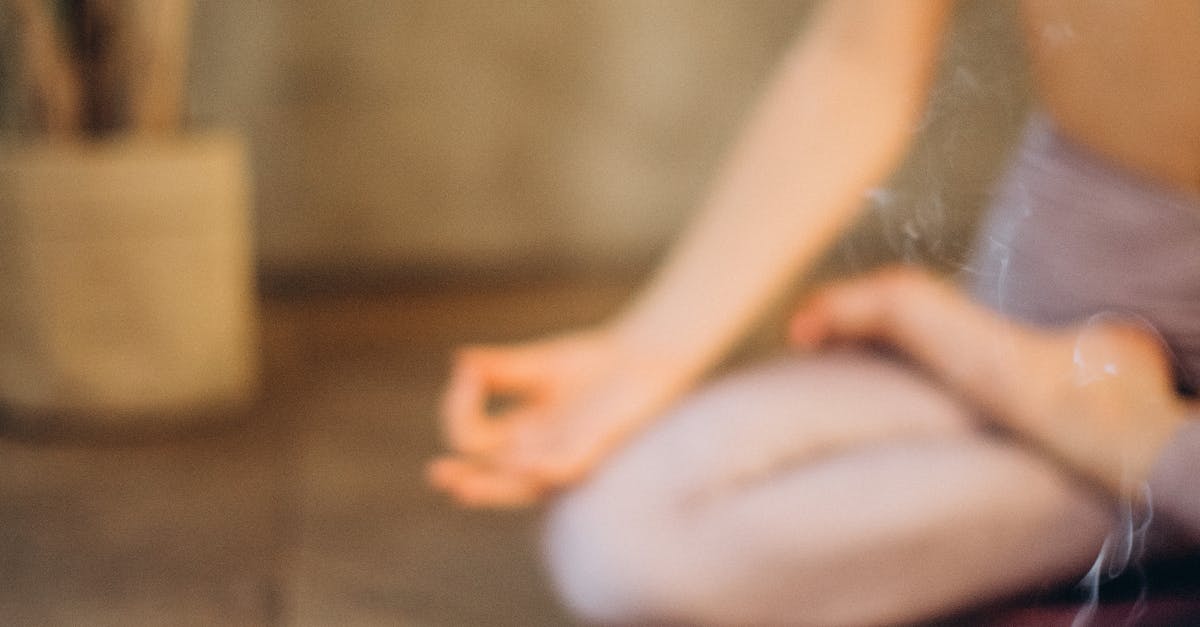Are you having difficulty concentrating and feeling scattered throughout the day? Are you left with a foggy mind after seemingly hours of studying or working? Then you’ve come to the right place.
I had the same problem until I finally decided to try something new – meditation. By incorporating meditation into my daily routine, I found that it improved my focus significantly. Not only did it help me concentrate better, but it also improved my awareness and self-discipline.
In this article, I’ll walk you through exactly how you can use meditation to sharpen your focus and reclaim your initiative. We’ll also explore the science behind what happens in the brain when one meditates and how it affects our ability to focus.
Ready? Let’s get into it!
-

Celestial Soul Eco-Friendly Tote Bag
$18.50 Select options This product has multiple variants. The options may be chosen on the product page -

Celestial Soul Women’s T-Shirt
Price range: $20.00 through $21.50 Select options This product has multiple variants. The options may be chosen on the product page
Understand How Meditation Can Benefit Your Concentration

Ah, concentration. We’ve all been there – watching the clock on the wall, desperately willing time to tick faster as that project deadline you set your eyes on months ago looks ever more insurmountable. You can feel the mental exhaustion and the negative discouragement creeping up and sabotaging your following efforts. But the solution might be right there in the middle of all this chaos – meditation.
Sure, you’re probably hearing that age-old line: “Meditation helps you concentrate better and be more productive.” But what’s it about, and can it help you out of your slump? Well, it definitely can, and luckily, it doesn’t have to be a mystery.
Regarding it, the point of mediation is to focus on the here and now. The practice is meant to remind you that the important work you’re doing isn’t out of reach, it’s right here, at the moment. Calming your body and mind, living in the present, and focusing your attention on the task leads to an improved sense of concentration. With regular practice, you may soon find yourself having a calmer, less risky approach when tackling big projects.
But, don’t worry, you don’t have to immediately become a professional yogi. Meditation isn’t about complicated poses and mysterious hand gestures, it’s about simply being still and paying attention to your thoughts and feelings. Just 10 – 15 minutes a day of sitting and being mindful of your inner world can benefit your concentration.
So, if your brain feels like a runaway train when it comes to getting through all the tasks you need to do, the secret could be in the surrender. Let go of the noise, and the mental clutters and sit down with yourself. Increased concentration, good problem-solving skills, and a calm mind – maybe meditation can help you find your inner bliss.
Establish the Time and Place Needed to Meditate

You have decided to incorporate meditation into your daily routine – great for you! Now it’s time for the fun part: planning! Figuring out when and where to practice meditation. One of the most important steps in committing to a routine of meditating regularly is to design a schedule that works for you.
First, choose the time of day and the length of time for your practice. Everyone has different needs, but time and duration are important to make this activity part of your life. You can start your day by quietly meditating daily if you’re a morning person. You don’t have to start with a huge commitment — gradually increasing your practice as it becomes part of your daily routine is great too.
It’s also important to choose the right place. I tried practicing meditation in my bedroom a while back but quickly learned it wasn’t the best choice. Sitting in the same space where I sleep didn’t help me to be mindful or relaxed. Eventually, I moved my practice to the living room and found it made a difference. If possible, try to make your meditation spot peaceful and comfortable — a corner for mindfulness away from everyday life’s stressors.
Once that’s done, don’t forget to make sure all your necessary items, such as comfortable seating, any items you’ll need for your practice, and relaxing music (if desired), are ready. And there you have it – the perfect little corner of peace you can call your own!
As you can see, it’s not difficult to establish the right time and place for your practice. Take some time to think and find what works best for you, and you’ll be on your way to incorporating meditation into your daily routine!
Start Meditation with Deep Breathing Exercises

Ready to get started with your mindfulness journey? Let’s dive in and explore how deep breathing exercises can help.
Are you feeling a little bit anxious? It’s normal. Don’t beat yourself up about it. But what can you do about it? Deep breathing exercises are a great way to start calming your mind and focusing on the present moment.
Take a deep breath and fill your lungs with oxygen. Hold it for a few seconds, thinking of the moment and nothing else. Exhale slowly and keep your focus. Notice how your body relaxes as you do this. Try to repeat this a few times, taking longer and slower breaths each time.
Now you’ve got the basics, here’s a great deep breathing exercise to help improve your concentration:
Find a comfortable spot where you won’t be distracted and close your eyes. Begin to take regular breaths and focus on your breathing. After a few minutes, take a deep breath. Hold it for 10 seconds, then let it out slowly. Do this again and repeat it 3 times. Now bring your focus to an image you created in your head. It could be a still lake, a peaceful beach, or a mountain. Spend a few minutes focusing on this image and absorb it. When your mind begins to wander, take a deep breath and refocus.
Deep breathing exercises can be a powerful tool to help you master your concentration. See what works for you and take it from there. Remember to be kind to yourself, and don’t be too hard if you find your mind wandering.
Adopt Progressive Muscle Relaxation to Help Increase Focus

If you want to level up your concentration game, progressive muscle relaxation (PMR) could be the secret ingredient you’re missing. PMR is a technique of systematically tensing and releasing muscle groups to help reduce the physical stress that accumulates in our bodies. It’s not only a great way to relax but can also improve your ability to concentrate and focus too.
Ready to give it a go? It’s easy to do. Just find a quiet spot and sit in a comfortable, relaxed position. Start by tensing and releasing the muscles in your feet and work your way up your body: ankles, calves, thighs, buttocks, hands, arms, shoulders, neck, and head. As you tense, hold the tension for about five or 10 seconds before releasing. Make sure you do both sides of the body, the front and back.
You should feel pretty relaxed once you’re finished tensing and releasing all the major muscle groups. Give yourself a minute or two to take inventory of your body’s feelings. It’s important to note how tight your body was before to get an improved sense of how relaxed you are now. As with any form of relaxation, practice makes perfect; the more you practice, the better your technique will become.
An added benefit of PMR is the improved ability to concentrate and focus. Tensing the muscles of your body can help determine where the tension is rooted and provides a deeper understanding of the tension-releasing process. As your body begins to relax, your mind will follow and open up a more connected and mindful state of concentration—perfect if you have a problem to solve or a task that needs attention.
Once you perfect the art of PMR, you can slip it into your routine when you must let go of stress and improve your focus. You can do it in a few minutes before starting a new task! Plus, if you want to get an even deeper relaxation, pair the technique with a few simple breathing exercises. That way, your body, and mind will be your best version. So give it a shot, and prepare to reap the rewards of increased concentration and focus.
Focus on a Single Word

You know how sometimes your mind keeps wandering off, and you just can’t seem to stay focused on a single task? Meditation can be a great tool to help you bring your attention back to what matters. In this article, we’ll look at how focusing on a single word can make all the difference when it comes to being productive.
First, let’s start with an exercise. Close your eyes, relax, and pick a word that resonates. It can be anything from a phrase to a single letter. For example, if your word is “refresh,” you can focus on the meanings or think of other words that are associated with the word. You must use this word as the focal point of all your thoughts.
Now it’s time to start the exercise. Find a comfortable and quiet spot, then close your eyes. Repeat this word silently and steadily for a few minutes or until you feel a transition in your mental state. You may find that your mind will wander during this period, so don’t worry if that happens, gently bring your attention back to the word you are focusing on.
You can also move up a level and combine words such as “refresh, relax and breathe.” This will further emphasize the message, but the focus should remain on one word while the focus is on the meaning behind each word. This can be a powerful exercise to silence the internal chatter of your mind and stay in a focused, positive state of mind.
Once you become comfortable focusing on a single word, apply it to your everyday activities. Whenever you feel your mind wandering off, catch yourself and bring your attention back to the word. Do this as many times as you need to, and you’ll be surprised how powerful this ability is to keep the distraction of your thoughts and emotions from taking control.
Focusing on a single word is a simple but powerful tool to help you increase your concentration and productivity. Give it a try and see how it can work for you.| No references.
Expand Your Meditation Practice to Include Imagery

Hey there! Want to increase your meditation practice for improved energy and concentration? It’s easy with imagery! Imagery is an easy way to kick your meditation routine into high gear.
First, before diving into imagery — or any meditation technique — you must start by calming your mind. Try deep breathing exercises or progressive muscle relaxation to get started.
Once you’ve taken the necessary steps to quiet your mind, you’re ready for the fun part — guiding your imagination! Here are some great ways to get started:
- Create an image of a calming natural landscape: Imagine a beach, a meadow, a forest, or whatever scene helps relax your mind.
- Picture a positive motivation: Think of a goal, an achievement, or a success that brings you joy. Make it as vivid as possible and explore the emotion behind the image.
- Visualize your best version of yourself: Create a picture of how you want to look, act, or feel and hang onto that image.
- Don’t be afraid to be creative: For example, picture yourself as a superhero and imagine flying through your favorite scene.
By combining imagery and deep breathing techniques with your meditation practice, you’ll be well on your way to increased concentration and improved energy. Feel free to experiment and have a good time with it!
No references were used.
Incorporate Meditation into Your Day-to-Day routine

Meditation isn’t something you do once and then forget about. Incorporating it into your day-to-day routine can help you develop your focus and concentration, making it easier to stick with your practice. And the great news is that it doesn’t have to be boring!
It’s time to get creative! Try taking a break from your usual routine to do some walking meditation. Stroll around the block, focusing on keeping your feet moving, and your body relaxed. Make it fun by adding in some simple stretches or doing a shoulder roll each lap.
If you’re feeling adventurous, why not take a ‘breath walk’? As you stride along, focus your attention on your breath. Feel the air passing in and out, making your chest and abdomen expand and contract, and take the time to be present with the feeling.
Not a fan of walking? Incorporate some yoga into your day to refresh the mind and body. Take a few minutes to be mindful in poses like cat, cow, or child’s pose. Even if you don’t make it to the mat daily, why not try gentle, mindful stretches at your desk?
Try setting aside a few minutes each day for some seated meditation. The goal should be to learn to observe your thoughts without getting pulled into them. When your mind drifts, don’t get frustrated, notice the distraction and gently bring it back to the breath.
And don’t forget to have fun! Once you’ve made time for your practice, get creative. Feel free to add sound, movement, singing, and chanting. Incorporate the senses and create a multi-dimensional practice that works for you.
The key to incorporating meditation into your day-to-day routine is to make it light-hearted yet meaningful. Enjoy exploring different ways to be still and focus on how it makes you feel when you’re done. You never know what surprises your meditation might bring!
Create a Support System to Encourage Your Progress

Are you feeling stuck in a rut and find it hard to focus? You have come to the right place! You have already begun to take the steps necessary to improve your concentration. One of the most important steps in improving your focus is creating a support system to encourage your progress.
First, let’s figure out who can make up your support system. It can be your family, your friends or peers, or even your pets who can provide a listening ear and offer knowing nods of encouragement. You might need unbiased feedback, so consider including friends and colleagues who can provide constructive criticism and positive reinforcement.
Second, figure out how these people will support you. Your family and friends may be best used as cheering squads, giving you validation when needed and reminding you of your successes. Colleagues can provide feedback through observation and critical analysis, so be sure to ask them which areas you can focus on to continue to improve. A conversation isn’t possible with pets, but that doesn’t mean their support isn’t valuable. Their presence alone and love can give you solace and comfort during difficult times, and that’s more than enough.
As you begin to improve your concentration, it’s important to remember that your support system should not just be there while you’re on an upswing – they should also be there when you’re struggling. This can be a difficult task, as it takes a special understanding to willingly stick with someone through thick and thin. Reach out and thank your family and friends who have committed to journeying with you, even when you falter.
Now, it’s time to put these ideas into action. Let those closest to you know they are integral to your journey to improved concentration. Invite them to the meditation program and have them join the new person more than just academically. Seeing your progress and participating in it can make all the difference.
Building a support team to encourage your progress is a great way to help you stay on track and remain motivated as you hone your focus. Who knows? You may even make a few close friends along the way.
Conclusion
In conclusion, learning how to concentrate better by incorporating meditation into your daily routine—whether it’s a short break from work or a five-minute yoga session to help you stay focused—can be a very powerful. Not only will meditation help you remain disciplined and productive, but it can also help promote inner peace and harmony in your life. As you practice incorporating meditation into your routine, you can feel the benefits of heightened focus and clarity of mind.
So don’t hesitate to give it a try! It could be something that helps you accomplish more than you ever thought possible.
References: Sansbury, D. (2021). How To Concentrate Better By Incorporating Meditation Into Your Routine. Retrieved 10 April 2021, from https://www.julence.com/blog/how-to-concentrate-better-by-incorporating-meditation-into-your-routine
References:
- http://www.m Health.umn.edu/mental-health/ProgressiveMuscleRelaxation.html
- https://www.ncbi.nlm.nih.gov/pmc/articles/PMC5866555/
- Meyer, Melissa. “How To Concentrate Better By Incorporating Meditation Into Your Routine.” The National Center for Biotechnology Information, U.S. National Library of Medicine, Aug. 2019, https://www.ncbi.nlm.nih.gov/pmc/articles/PMC6633954/.

